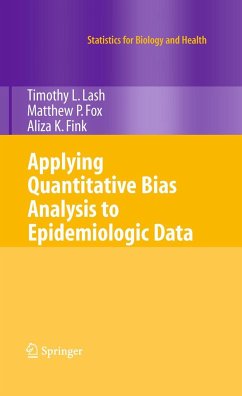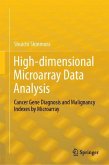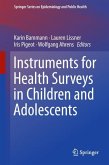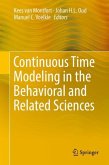Bias analysis quantifies the influence of systematic error on an epidemiology study's estimate of association. The fundamental methods of bias analysis in epi- miology have been well described for decades, yet are seldom applied in published presentations of epidemiologic research. More recent advances in bias analysis, such as probabilistic bias analysis, appear even more rarely. We suspect that there are both supply-side and demand-side explanations for the scarcity of bias analysis. On the demand side, journal reviewers and editors seldom request that authors address systematic error aside from listing them as limitations of their particular study. This listing is often accompanied by explanations for why the limitations should not pose much concern. On the supply side, methods for bias analysis receive little attention in most epidemiology curriculums, are often scattered throughout textbooks or absent from them altogether, and cannot be implemented easily using standard statistical computing software. Our objective in this text is to reduce these supply-side barriers, with the hope that demand for quantitative bias analysis will follow.
From the reviews:
"This is the first book to focus on a compilation of bias analysis methods from the epidemiologic perspective. ... Throughout this well-written book, examples presented are highly informative and easy to follow for the target audience of students and public health researchers with a foundation in epidemiologic study design and methods. ... this book can be used either as a reference work by practicing epidemiologists or as a textbook for an intermediate-to-advanced course in epidemiologic methods." (Chanelle J. Howe and Stephen R. Cole, American Journal of Epidemiology, Vol. 170 (10), November, 2009)
"Applying Quantitative Bias Analysis to Epidemiologic Data is the first text of its kind to give a comprehensive overview of the field. ..This book fills an important gap among epidemiology texts. It provides a unified reference for the myriad of bias analysis methods that appear in the literature. It is broad and thorough in scope, and yet easily accessible..." (Biometrics)
"This is the first book to focus on a compilation of bias analysis methods from the epidemiologic perspective. ... Throughout this well-written book, examples presented are highly informative and easy to follow for the target audience of students and public health researchers with a foundation in epidemiologic study design and methods. ... this book can be used either as a reference work by practicing epidemiologists or as a textbook for an intermediate-to-advanced course in epidemiologic methods." (Chanelle J. Howe and Stephen R. Cole, American Journal of Epidemiology, Vol. 170 (10), November, 2009)
"Applying Quantitative Bias Analysis to Epidemiologic Data is the first text of its kind to give a comprehensive overview of the field. ..This book fills an important gap among epidemiology texts. It provides a unified reference for the myriad of bias analysis methods that appear in the literature. It is broad and thorough in scope, and yet easily accessible..." (Biometrics)








